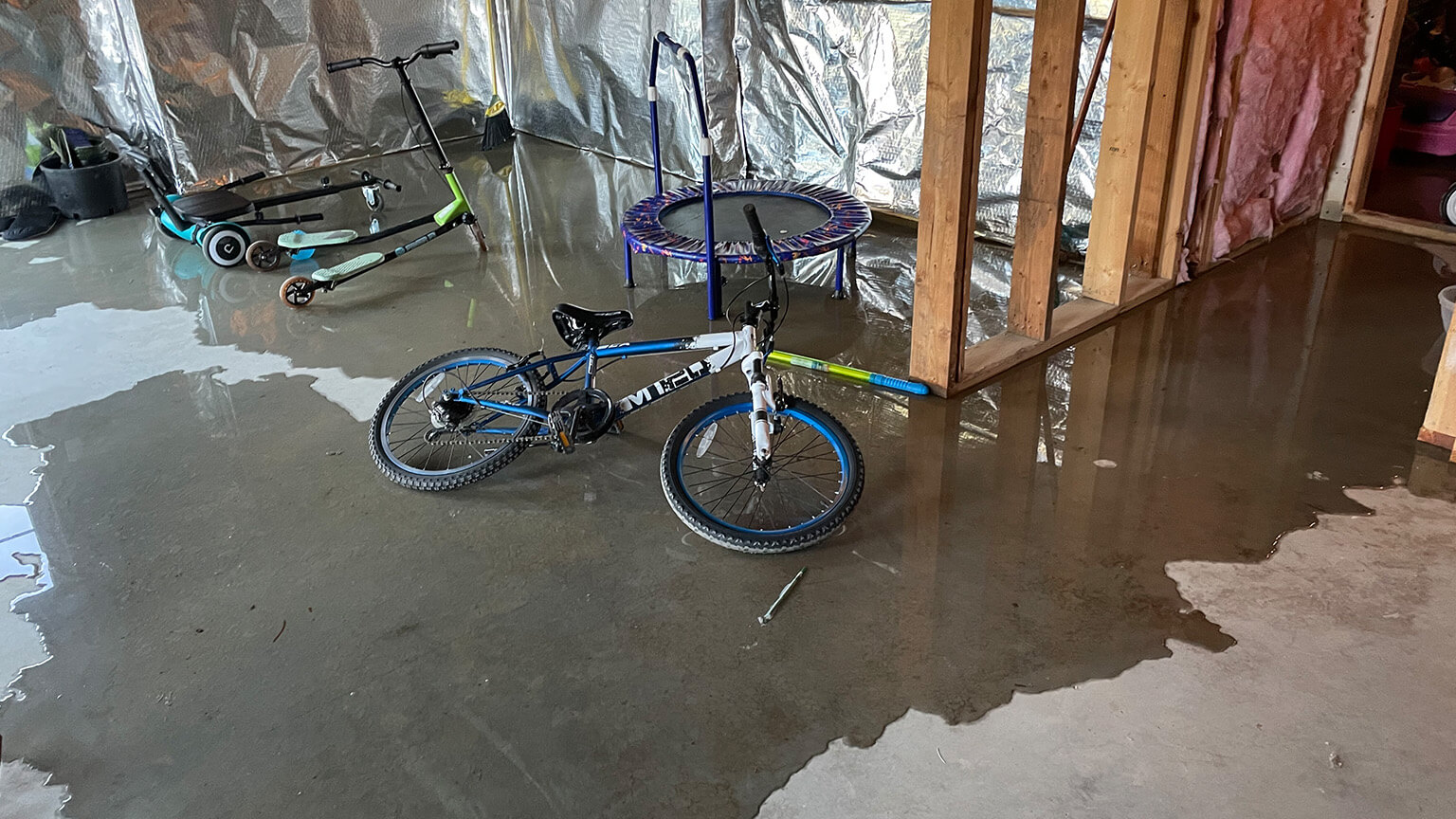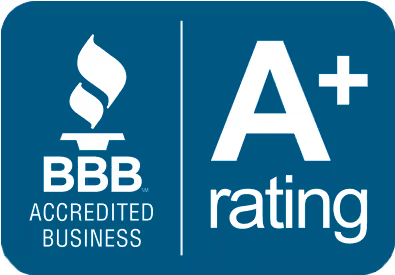
As a homeowner, knowing what to do when your basement floods can feel overwhelming.
But it’s important to act fast to prevent permanent damage to your belongings and mold growth. If you are currently dealing with a flooded basement due to things like burst pipes, a sewage backup, or heavy rainfall that found its way through cracks in your foundation , this guide is here to help you to begin the remediation process fast. The steps you should take during a basement flood include:
Safety Note: If you’re dealing with a sewage backup, do not enter floodwater in your basement—even with protective gear. This water is contaminated, which means it could put you at risk of contracting dangerous diseases. In this scenario, it’s important to call a plumber immediately to get to the bottom of your problem. As well as a professional restoration company to safely handle the contaminated black water and sanitization process.
Before getting near your basement, you must ensure that all electrical power is shut off to prevent electrocution. Regardless of how much standing water there is. If your home’s circuit breaker is located inside your garage (or you have an outdoor fuse box), be sure to cut the power to your entire home right away. If your circuit breaker is inaccessible because it’s located within your basement, you must call a licensed electrician before moving forward with the next steps.
No matter the source of your basement flooding, it’s important to put on protective gear like rain boots, waterproof gloves, and/or a mask before entering your basement and following the next steps. In extreme cases of flooding, hip or chest waders may be useful if you own them.
Now that the power to your house is shut off and you’re equipped with protective gear, you can enter your basement. If you’re dealing with controllable flooding sources like burst pipes, it’s important to stop the flooding as quickly as possible. So be sure to turn off your water main right away. If rainwater is the cause of your basement flooding, you’ll have to wait until the rain or storm stops before the flooding will stop.
During this stage, do your best to remove any important items as quickly as you can to minimize damage to your belongings. Be cautious when moving throughout the flooded area, as surfaces will be slick.
You can now begin the water removal process. To remove standing water, you can utilize tools like a water-safe wet vacuum, pool pump, or a sump pump. If some water is still left over after using these tools, you can use a mop or towels to soak up the rest (just be sure to thoroughly wash and dry your mop head and/or towels afterward). During this stage, it’s important to eliminate standing water as quickly as possible to prevent the possibility of mold growth.
Tip: If you have an old or under-powered sump pump that can’t keep up with basement flooding, ‘58 Foundations & Waterproofing can help. Our team has meticulously tested numerous makes and models of sump pumps to ensure we provide the most reliable, long-lasting, and durable sump pumps on the market.
After standing water has been eliminated, it’s time to get started removing and drying out all your remaining belongings. To begin, remove all water-damaged property that was affected by the flood (e.g., furniture, books, storage containers, etc.) and place them in a well-ventilated area where they can dry out. Damp objects that cannot be cleaned with a liquid-based disinfectant—such as cardboard boxes—should be thrown away to avoid mold growth.
If you have any valuable documents, paperwork, or photographs that have been dampened, try placing them between waxed paper or wrap them in a non-woven polyester cloth before putting them in the freezer. This may work to stop water damage and prevent mildew growth.
It’s also important to remove heavily soiled drywall, insulation, or flooring such as carpeting. The presence of these damp items can prevent your basement from fully drying out and promote mold growth. While it’s sometimes possible to salvage wet drywall, insulation, or to dry wet carpet, they can easily harbor mold and mildew if they aren’t dried properly. The same goes for basements that use hardwood floors or wood tile; it is important to dry them as best as possible and survey for damage. Depending on how damaged your wood flooring is, you might not need to replace it (or maybe replace just a little) and only need to refinish it.
Safety Note: As you’re removing damp objects, be sure to leave electrical items like televisions, gaming consoles, or lamps in place. Even if the electrical power to your home is disconnected. For your safety, it’s best to let electrical items dry in place.
With all damp objects removed from your basement, you can begin to dry out the area and minimize the chance of mold growth. Utilize a dehumidifier or dehumidifiers to remove moisture from the air and large, high-powered fans to encourage air circulation. (These tools can be rented if you don’t already have them). Don’t forget to empty your dehumidifier and clean out its filter often and be sure to run your air conditioning as much as possible as things dry out.
After you’ve given your basement several days to dry out, it’s time to sanitize the entire area. While wearing rubber gloves, protective eye wear, and a mask, be sure to scrub all hard surfaces with a solution of one cup of chlorine bleach to one gallon of water to remove mold and bacteria. Don’t forget to ventilate the space as much as possible during this process. For extra assurance, you can also set up a HEPA air purifier to eliminate airborne mold spores and other allergens.
Tip: Still finding mold or suspicious spots in your basement even after sanitizing? At ‘58 Foundations & Waterproofing, our professional mold remediation services can help. During a free mold inspection, we can help you locate sources of mold, and work with you to contain and eliminate them quickly.
It’s never a good time to deal with a flooded basement. Thankfully, with this guide from ‘58 Foundations & Waterproofing, you will know what to do if your basement floods again. Additionally, our team can work with you to ensure the proper precautions are in place to mitigate damage in your basement in the event of a flood.
Our basement waterproofing solutions—which include our specially-engineered Channel ’58 drain channels installed around the perimeter of your basement floor, our high-power Workhorse sump pump, and sump pit—will actively work to move more water faster out of your basement. Ultimately, this will provide the protection your basement needs to prevent future flooding.
For extra protection to your basement, we also provide waterproofing for basement walls. This includes the installation of a heavyweight vinyl waterproof membrane or rigid plastic panels on your basement walls. Combined, these solutions provide the ultimate protection against basement flooding. We also offer foundation repair solutions to address problems that may be connected to your wet basement problem.
In addition, if you’re dealing with flooding or moisture problems in your crawl space, we also offer professional crawl space encapsulation and waterproofing services. We even offer mold removal services to keep your home safe and healthy.
With over 64 years of experience in basement waterproofing, you can always depend on ’58 to keep your basement safe and dry. To provide extra peace of mind, we also offer a life-of-the-structure warranty and a money-back guarantee. Give us a call today to schedule for a free inspection and to receive a detailed estimate! We look forward to helping you with all your basement flooding repair needs!






We respect your privacy. By submitting, you authorize '58 Foundations and Waterproofing to reach you via call, email or text for information about your project needs. We will never share your personal information with third parties for marketing purposes. You can opt out at any time. Message/data rates may apply. Consent is not a condition of purchase. Privacy Policy